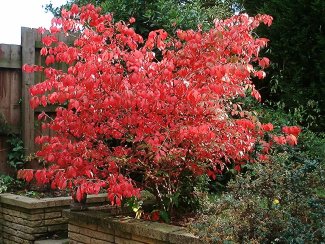China, Japan, Korea
Deciduous shrubs, 1-4 m tall; young branches usually with 2 or 4 winglike corks, wings up to 5 mm wide, 1-2 mm thick, twigs 4-angled, green or brown when dry. Petiole sessile or very short, 2-4 mm; leaf blade thinly leathery to papery, obovate or obovate-elliptic, sometimes ovate-elliptic or oblong-elliptic, 4.5-10 × 2-4 cm, base cuneate or attenuate, margin crenulate to serrulate, apex acute, acuminate, or even caudate; lateral veins 5-7 pairs, curving forward and disappearing before reaching margin. Peduncle slender and short, 1-2 cm, typically 1 dichotomous branch with 3 flowers, rarely 2 branches with more flowers; pedicel slender, 5-7 mm. Flowers 4-merous, ca. 9 mm in diam.; sepals suborbicular; petals green, light yellow, or greenish yellow, ovate, base attenuate. Capsule reddish brown when fresh, dark brown or gray when dry, 4-lobed, 1-1.3 cm in diam., only 1-3 lobes developing, lobes ovoid. Aril bright red. Fl. Apr-Jul, fr. Jul-Nov.
It is native to forests, woodlands and scrub areas in eastern Russia, Japan, China and Korea. It was introduced into the U.S. around 1860 as an ornamental, and over time has become an extremely popular shrub for homes, commercial properties and along highways.
